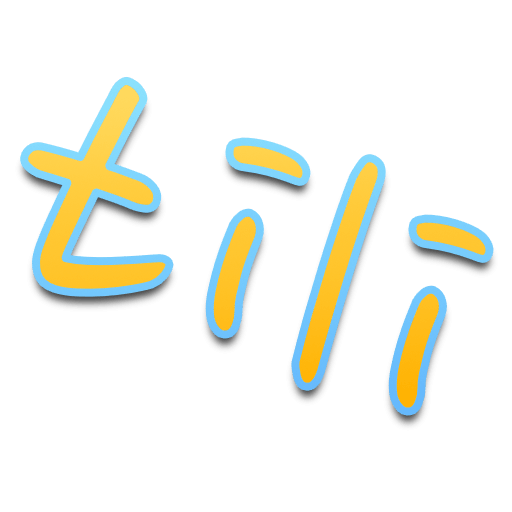Complex form of the present continuous tense (naq osy shaq) of the Kazakh language
The complex form of the present continuous tense of the Kazakh language is formed by using auxiliary verbs otyrý — to sit, *jatý — to lie, turý — to stand, júrý — to walk. The roots of these auxiliary verbs join the end of –myn/-min, -syń/-siń, -syz/-siz, -myz/-miz, -syńdar/-sińder, -syzdar/-sizder. Personal endings –yp/-ip/-p are added to the verb before the auxiliary verb. *When conjugating the verb jatý, the form of the jatyr is taken for its root.
- Examples of a complex form of the present continuous tense
- The use of auxiliary verbs
- Denying in the complex form of the present continuous tense
- Interrogative form of the present continuous tense
Examples of a complex form of the present continuous tense
oqy-p otyr+ending – to read
| Men oqyp otyrmyn – I am reading | Biz oqyp otyrmyz – We are reading |
| Sen oqyp otyrsyń – You are reading | Sender oqyp otyrsyńdar – They are reading |
| Siz oqyp otyrsyz – You are reading | Sizder oqyp otyrsyzdar – You are reading |
| Ol oqyp otyr – She/He is reading | Olar oqyp otyr – They are reading |
oqy-p jatyr+ending – to learn
| Men oqyp jatyrmyn – I’m learning | Biz oqyp jatyrmyz – We are learning |
| Sen oqyp jatyrsyń – You are learning | Sender oqyp jatyrsyńdar – You are learning |
| Siz oqyp jatyrsyz – You are learning | Sizder oqyp jatyrsyzdar – You are learning |
| Ol oqyp jatyr – She/He is learning | Olar oqyp jatyr – They are learning |
kel-ip tur+ending – to come
| Men kelip turmyn – I am coming | Biz kelip turmyz – We are coming |
| Sen kelip tursyń – You are coming | Sender kelip tursyńdar – You are coming |
| Siz kelip tursyz – You are coming | Sizder kelip tursyzdar – You are coming |
| Ol kelip tur – She/He is coming | Olar kelip tur – They are coming |
oıla-p júr+ending – to think
| Men oılap júrmyn – I am thinking | Biz oılap júrmyz – We are thinking |
| Sen oılap júrsyń – You are thinking | Sender oılap júrsyńdar – You are thinking |
| Siz oılap júrsyz – You are thinking | Sizder oılap júrsyzdar – You are thinking |
| Ol oılap júr – She/He is thinking | Olar oılap júr – They are thinking |
If the auxiliary verb is jatyr is used along with the verb barý (to go), kelý (to come, to appear), aparý (to carry), ákelý (to bring), these verbs form the participle with endings -a/-e. Auxiliary verb jatyr is not translated, and indicates that the action is happening at the moment:
Men qala-ǵa bar-a jatyr-myn - I'm going to the city. Men uı-ge kel-e jatyr-myn - I'm going to home. Men oǵan kitap-sen* apar-a jatyr-myn - I'm bringing him a book. Men osynda shaı ákel-e jatyr-myn - I'm bringing tea here.
* kitap-ty = the book is added to the end of the accusative case (tabys septik) of nouns.
The use of auxiliary verbs
To understand which auxiliary verb to use, you need to think in what position a particular action is usually performed. If jazyp jatyr means he writes in the moment, without specifying the condition of the subject, then úıqtap jatyr indicates that the subject is lying is doing, and his condition — he’s sleeping (lying down) at the moment.
If these auxiliary verbs indicate the duration and nature of the action, then the state in which the speaker is located indicates the duration of the action. A person usually stands (turý) for a short time while doing something, so it can be difficult. Moving (júrý), a person can do more. Well, when sitting (otyrý), it can perform much more work. And it is no secret that a person can do something lying down (jatý) for a long time.
Finally, if you do not know exactly which auxiliary verb to use, then jatyr will work very well, since it has completely lost its original lexical meaning, while the verbs otyr, tur and júr still have a shade of the original meanings of “sit”, “stand” and “walk”, respectively.
Denying in the complex form of the present continuous tense
The negative form of the complex present continuous tense (naq osy shaq) of the Kazakh language is formed:
- by using auxiliary verbs with endings –ǵan/-gen, -qan/-ken. Also after the auxiliary verbs added the word “joq”, joined by personal endings: –pyn/-pyz, -syń/-syz, -syńdar/-syzdar or the word emes to which personal endings –pin/-piz, -siń/-siz, -sińder/-sizder are added.
oqy-p otyr+ǵan joq/emes+ending – do not read
| Men oqyp otyrǵan joqppyn / emespin – I’m not reading | Biz oqyp otyrǵan joqpyz / emespiz – We are not reading |
| Sen oqyp otyrǵan joqsyń / emessiń – You’re not reading | Sender oqyp otyrǵan joqsyńdar / emessińder – We are not reading |
| Siz oqyp otyrǵan joqsyz / emessiz – You are not reading | Sizder oqyp otyrǵan joqsyzdar / emessizder – We are not reading |
| Ol oqyp otyrǵan joq / emes – He/She is not reading | Olar oqyp otyrǵan joq / emes – They are not reading |
oqy-p jat+qan joq/emes+ending – do not learn
| Men oqyp jatqan joqpyn / emespin – I am not learning | Biz oqyp jatqan joqpyz / emespiz – We are not learning |
| Sen oqyp jatqan joqsyń / emessiń – You are not learning | Sender oqyp jatqan joqsyńdar / emessizder – You are not learning |
| Siz oqyp jatqan joqsyz / emessiz – You are not learning | Sizder oqyp jatqan joqsyzdar emessizder – You are not learning |
| Ol oqyp jatqan joq / emes – He/She is not learning | Olar oqyp jatqan joq / emes – They are not learning |
oıla-p júr+gen jok/emes+ending – do not think
| Men oılap júrgen joqпын / emespin – I am not thinking | Biz oılap júrgen joqпыз / emespiz – We are not thinking |
| Sen oılap júrgen joqsyń / emessiń – You are not thinking | Sender oılap júrgen joqsyńdar emessizder – You are not thinking |
| Siz oılap júrgen joqsyz / emessiz – You are not thinking | Sizder oılap júrgen joqsyzdar / emessizder – You are not thinking |
| Ol oılap júrgen jok / emes – He/She is not thinking | Olar oılap júrgen jok / emes – They are not thinking |
- by adding to the main verb, with which the function verb is combined, the negation affixes -pa/-pe, -ba/-be /, -ma/-me. After that, the affix takes the form –ı (and not -p): aıt + pa + ı jatyr – do not say, oqy + ma + ı otyr – do not read, ber + me + ı tur – do not give, kes-pe-ı júr – don’t cut, jaz-ba-ı otyr – do not write.
| Men kitapty oqymamyr otyrmyn. — I’m not reading a book right now. Biz ony kórmeı otyrmyz. — We don’t see him now. Sender ne, istemeı otyrsyńdar? — What aren’t you doing now?” | otyr |
| Bala mektepte oqymaı jatyr. — The child is not currently in school. Men onda oryndyq aparbaı jatyrmyn. — I’m not carrying a chair there right now. Olar uıyqtamaı jatyr. — They are not sleeping now. | jatyr |
| Men qazir onymen sóılespeı turmyn. — I’m not talking to her right now. Olar maǵan qaramaı túr. — They are not looking at me now. Sen bizge kelmeı tursyń. — Don’t come in our place right now. | tur |
| Men mektepte oqymamyr júrmin. — I’m not in school right now. Ol ýnıversıtette oqymaı júr. — She is not currently studying at the University. Men sen týraly oılamamyr júrmin. — I’m not thinking about you right now. | júr |
Interrogative form of the present continuous tense
In the present continuous tense, questions are using negative particles -ma/-me, -ba/-be or interrogative words.
| Qazyr ǵalomtorda oqyp júrmasyń ba? | Are you not studying online now? |
| Siz jınalysta sóılesip jatyrsyz ba? | Are you speaking at a meeting now? |
| Balalardy qarap otyrmasyńdar ma? | You’re not looking after the kids right now?” |
| Olar uıyqtap jatyrsyńdar ma? | Are they sleeping now? |
| Sen mektepte oqyp júrsiń me? | Are you in school now?” |
| Balalar nan ákelip júr me? | Children are now the bread? |
| Biz ekara kórip otyrmyz ba? | Do we see him now? |
| Biz onymen sóılesip turmyz ba? | Are we talking to her now? |
| Biz úıdiń ishin únsiz jınastyryp júrmiz be? | We are now cleaning the house in silence? |
| Sender emes istep otyrsyńdar? | What are you doing now? |
| Ashanada kim bolyp jatyr? | Who is in the kitchen now? |
| Olarmen qaı jerde serýendep jatyr? | Where does he walk with them now? |
This present tense expresses an obvious, continued action. The past continuous tense (naq ótken shaq) is constructed in a similar way, but affixes of the past tense are added to auxiliary verbs.



